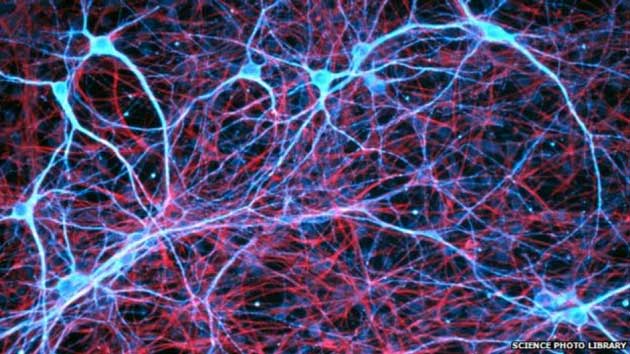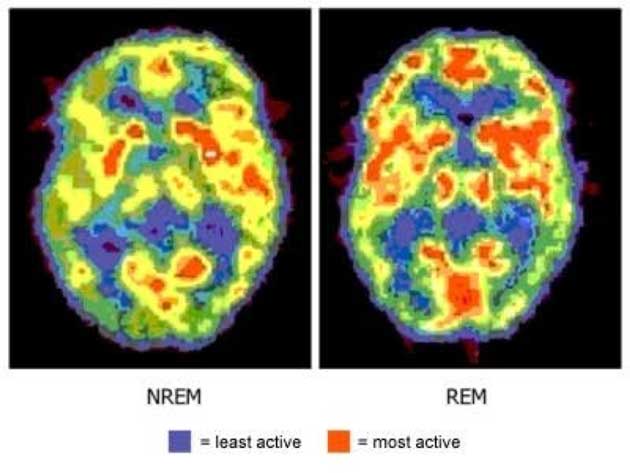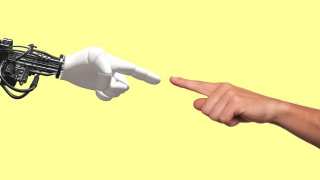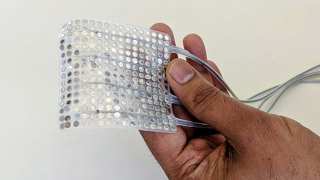“As a well-spent day brings happy sleep, so a life well spent brings happy death.” - Leonardo da Vinci
There exists an interesting theory based on the concept of the characteristics of the main phases of sleep and their intellectual combination. It is believed that these two stages of sleep could work together in order to boost creative problem-solving. Also, current technologies, such as the tablets, smartphones, and laptops, have a role to play in the quality of our sleep.
With this, it seems like our brain is taking a different structure, every day, which leads us to the question - are we constantly being reborn?
Sleep is a phenomenon of astounding complexity, where the brain switches periodically between two different stages, non-REM sleep, and REM sleep. Several hypotheses about the creative functions of dreams have been formulated in the past.
Giuseppe Tartini, a composer, gained inspiration for 'Devil's Trill Sonata' in a dream, where the Devil himself appeared to him and played the melody on Tartini's violin. In this way, many experiments have shown that sleep helps in promoting creative problem-solving.
Penny Lewis from Cardiff University and two of her colleagues have collated and combined such theories into a new hypothesis that explains why sleep and creativity are directly connected. Additionally, Duffy, a neuroscientist at Brigham and Women's Hospital and an associate professor of medicine at Harvard Medical School in Boston, explained the dependence that the quality of our dreams have on today's machines.
Therefore, this article explores the different aspects of achieving effective sleep, which could, in turn, have the ability to make us more productive in our everyday activities.
How Technology Can Affect Our Dreams
Sometime back, an experiment took place in a sleep lab where light and sound pollution were kept to a minimum. For five nights, participants chose whether to use their electronic devices for reading, emailing, browsing the internet, playing games or watching videos. They also chose when to go to sleep, knowing that they had to wake up at a specific time the next morning. During a separate five-day period, the study participants were allowed to read only printed books, magazines or newspapers, though the content choice was theirs. The participants chose to go to bed when the lights were turned off. It was observed that users of technology were less sleepy at bedtime and less alert, during the first hour after awakening, compared to print readers.
Study author, Jeanne Duffy, said, "Turning down the screen brightness ought to help, but we don't know how much. Using a program to change the screen output or using a filter may help, (but) again we don't know how much. And spending a lot of time outdoors during the day should help, but it has to be the day you're using the screen in bed, not the day after."
Non-REM Sleeping
From ancient times, people have been trying to explain the phenomenon of sleep. Sleep is not a passive state, but an active time where many physiological phases are hard at work. According to Harvard Medical School, many times the brain is more active when a person is asleep than when he is awake.
The two main phases of sleep are REM and non-REM, affecting how active the brain and the body are. During sleep, the brain repeatedly cycles through four distinct stages of REM and non-REM sleep, in a specific sequence.

A study conducted in 2015 that was the first to record individual brain cells during the REM cycle of sleep. (Source: Science Photo Library/BBC News)
There are three main phases of non-REM sleep that affect our way of thinking when we are asleep. Each stage can last from 5 to 15 minutes. When a person starts to fall asleep, they enter the non-REM sleep, where millions of neurons fire simultaneously and strongly. This involves a deep physiological state where the brain apparently replays and transforms memories. These reruns help to consolidate and strengthen newly formed memories, integrating them into an individual's existing knowledge. Also, this situation helps the brain extract generalities from specific memories.
Regarding this, Penny Lewis said, “Let’s say you replay memories of birthday parties. They all involve presents, cake, and maybe balloons. The areas of the brain that represent those things will be more strongly activated than areas that represent who was at each party, or other idiosyncrasies. Over time, the details may fade from memory, while the gist remains. That’s how you might form your representation of what a birthday party is.”
This process happens because of the connection between two parts of the brain. The first part is the hippocampus, which exists in the middle of the brain and captures memories of events and places. The second region is called the neocortex that stores memories of events and ideas. The hippocampus is responsible for the processes of the neocortex in which memories that are thematically related are replayed.
The REM Stage of Sleep
After the non-REM phase, the REM (Rapid Eye Movement) sleep is reached, where things are completely different.
During REM, the brain is more active and intense dreams are possible. Babies can spend up to 50 percent of their sleep in the REM stage, while most adults spend 20 to 25 percent of their total sleep time in this stage.
A chemical called acetylcholine - the same one that Loewi identified in his sleep - floods the brain, disrupting the connection between the hippocampus and the neocortex, and placing both these regions in a flexible state (i.e., connections between neurons can be more easily formed, strengthened or weakened here). This process happens during the REM stage of sleep. The brain allows the neocortex to, unconsciously, search for similarities between seemingly unrelated ideas, so it is safe to say that it strengthens the commonalities between things.
Association between Sleep Phases
While non-REM sleep helps us organize information into useful categories, REM helps us see beyond that to discover unexpected connections. The sleeping brain goes through one cycle of non-REM and REM sleep every 90 minutes or so, and both REM and non-REM sleep are very important for creativity and solving difficult problems, as they build on one another.
Project leader, Lewis, further added, “An analogy would be two researchers who initially work on the same problem together, then go away and each thinks about it separately, then come back together to work on it further.”

Image of the brain during the two different phases – NREM and REM – of sleep. (Source: Quora)
The aim of this research was to combine the two phases of the sleep, in order to find unrecognized links between what is already known and what is yet to be discovered about the abilities of the combination. Some parts of this framework are based on strong data, but others remain conjectures that need to be tested. For example, there isn’t much evidence to support Lewis' belief that the hippocampus nudges the neocortex into replaying related memories, during non-REM sleep.
Memories captured by the hippocampus are replayed during non-REM sleep, and as we detect similarities between them, the information gets stored in the cortex. Since the hippocampus and cortex are in close communication during this stage, Lewis and her colleagues proposed that the hippocampus controls what is being replayed. Also, because this part of the brain prefers to replay things that are thematically linked, it encourages researchers to find those links and use them to form schemas or organizing frameworks.
During REM sleep, on the other hand, things are quite different. Lewis' team suspects that the cortex replays stored memories in any combination, regardless of whether they are similar.
Lewis was also quoted saying, "So, what we propose is that, if you're stuck on some kind of problem, that problem is salient, and we know that salient things are replayed. The slightly hypothetical part is that, when something else is randomly activated in the cortex that has an element that's similar, you'll form a link."
It is these links that may be the creative leaps required to solve a problem.
However, all the evidence shows that these conjectures could make sense, especially the theory about the combination of the conceptual knowledge, in a way that the general idea could be right.
A probable problem about this hypothesis could be that it appears that people are totally deprived of REM sleep, without taking into consideration any mental illness, and they are high-functioning too.
To conclude, many claims are replayed by valid theorems while other speculations remain unproven. Machines can affect the processes of sleep and creativity in multiple ways. But since sleep is an integral part of our lives, we need to explore it in a way that we can learn how it affects us, and consequently, find the abilities that are generated in this state of mind.
Top Image: Many experts believe that sleep and the creative functions of the brain are closely associated with each other. (Source: Uratex)
References
1. REM vs. Non-REM Sleep: The Stages of Sleep, 2017, LiveScience, https://www.livescience.com/59872-stages-of-sleep.html
2. Lewis, P. A. et al (2018), How Memory Replay in Sleep Boosts Creative Problem-Solving, Trends in Cognitive Sciences, 22 (6), Pp 491-503
3. A New Theory Linking Sleep and Creativity, 2018, The Atlantic, https://www.theatlantic.com/science/archive/2018/05/sleep-creativity-theory/560399/
4. Your Tablet and Smartphone Is Ruining Your Sleep, 2018, WebMD, https://www.webmd.com/sleep-disorders/news/20180525/your-tablet-and-smartphone-is-ruining-your-sleep#1







No comment